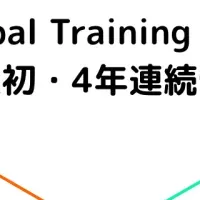
Global Smart Factory Market Expected to Reach $169.73 Billion by 2030
Overview of the Smart Factory Market
The smart factory market is poised for substantial growth, with projections estimating its value to reach $169.73 billion by the year 2030. According to the latest report from MarketsandMarkets™, this upward trajectory showcases a compounded annual growth rate (CAGR) of approximately 10.2% from its current valuation of $104.42 billion in 2025. This growth is primarily fueled by advancements in key technologies, including Industrial IoT, artificial intelligence (AI), and edge computing.
Key Drivers of Growth
The increasing emphasis on real-time monitoring, predictive maintenance, and production optimization has made the adoption of smart factory solutions a priority for various industries. Companies are keen to integrate connected, automated, and data-driven manufacturing systems to enhance efficiency, reduce operational downtime, and improve overall product quality. The push towards sustainability, cybersecurity, and regulatory compliance is also fostering a global transition towards smart factories, especially in critical sectors such as automotive, electronics, and pharmaceuticals.
Components and Solutions in the Market
Among the components contributing to the growth of the smart factory market, industrial robots stand out. This segment is anticipated to witness a significant CAGR as manufacturers increasingly rely on robotic solutions for tasks that demand precision, speed, and automation. In industries like automotive, electronics, and food & beverages, robots serve to minimize human error, enhance productivity, and reduce labor costs while facilitating tasks such as welding, assembly, and packaging. With the adoption of technologies like AI and machine learning, industrial robots are becoming more sophisticated, enabling effective collaboration with human workers.
Regional Insights
The Asia Pacific region is expected to exhibit a significant growth rate in the smart factory market. Countries such as China, Japan, South Korea, and India are heavily investing in digital manufacturing technologies. Initiatives like China’s “Made in China 2025” and India’s “Make in India” are accelerating the adoption of smart factory solutions. The focus on enhancing productivity while curbing operational costs, paired with rising labor costs, is driving this region's rapid shift towards automation and smart manufacturing practices.
Market Challenges and Opportunities
Despite the positive outlook, the smart factory market does face challenges, notably the integration of Information Technology (IT) and Operational Technology (OT) systems. Nonetheless, the impending adoption of 5G technology presents a remarkable opportunity for next-generation smart factories, allowing for more seamless connectivity and enhanced efficiency across the manufacturing landscape.
Conclusion
As industries worldwide embrace the revolution of smart factories, the market is set for significant growth driven by technological innovation and the need for enhanced operational efficiencies. The ongoing transition towards automation in various sectors highlights the importance of smart technologies in achieving competitive advantages and meeting consumer demands in an increasingly dynamic market environment. With leading players like ABB, Emerson Electric, Honeywell, Rockwell Automation, and Schneider Electric at the helm, the future of the smart factory market looks promising, steering towards a highly automated and interconnected manufacturing ecosystem.
Topics Consumer Technology)










【About Using Articles】
You can freely use the title and article content by linking to the page where the article is posted.
※ Images cannot be used.
【About Links】
Links are free to use.